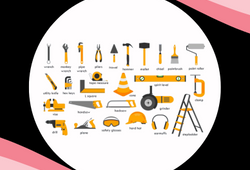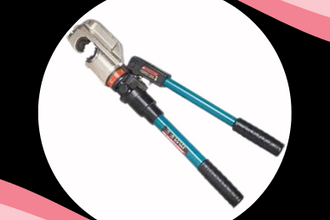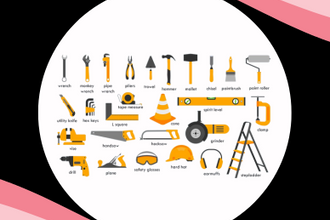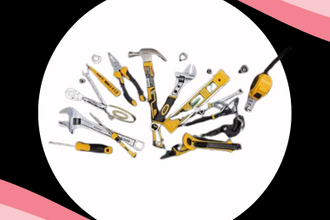What Is a File Tool?
A file tool is a simple hand tool to shape, smooth, or remove material. It rubs its rough surface (called “teeth”) against things like wood, metal, or plastic.
Common Types of File Tools
Here are some types and uses of file tools.
Flat File
A flat file is used for smoothing flat surfaces and has sharp edges. It’s great for general-purpose filing on wood or metal. People use it to smooth flat surfaces and sharpen tools.
b. Round File (Rat-Tail File)
A round file is used when you need to make holes bigger or smooth out curves. Its long, round shape is perfect for working in tight, circular spaces that other files can’t reach. Pipe work or round cutouts are tasks where the round file excels, offering great precision and control.
c. Half-Round File
A half-round file is used for tasks that require both flat and curved surfaces. Its flat side is great for general filing, while the rounded side is perfect for shaping curves or rounding corners. This makes it ideal for materials like metal, wood, or plastic, where a versatile filing tool is needed.
d. Square File
The square file is used for filing sharp corners and grooves. With its four sharp edges, this file is perfect for making precise adjustments on square holes or angles. It’s a must-have tool in metalworking and tool repair, where accuracy and sharp corners are essential.
e. Triangular File (Three-Square File)
A triangular file is used for filing tight angles and inside corners. Its three sharp sides allow it to work in spaces that other files can't reach, making it a useful tool for tasks that require precision. It’s commonly used by electricians and tool makers who need to clean up edges or sharpen tools.
f. Needle Files
Needle files are small and thin tools used for detailed work. They are perfect for delicate tasks such as jewelry making, electronics, or any project that requires fine control. Due to their size, you can hold needle files like a pencil, giving you better control for precise filing and shaping in tight, intricate spaces.
g. Rasp File
A rasp file is commonly used when you need to remove material quickly, especially on soft materials like wood. The rough, large teeth of a rasp file make it perfect for shaping rough surfaces and smoothing out large areas. It’s widely used in woodworking or carpentry due to its ability to handle tough tasks.
Parts of a File
Before you pick a file, it’s helpful to know its parts:
Handle:
The part you hold. Often made of wood or plastic.
Tang:
The thin part that connects the handle to the metal file.
Heel:
The bottom end of the file, near the handle.
Face:
The working surface with cutting teeth.
Edge:
The sides of the file. Some have teeth, others are smooth.
Tip (or Point):
The end farthest from the handle.
File Cut Types
Files also come with different tooth patterns, called "cuts." Each one gives a different finish.
Single-Cut:
One set of teeth. Good for fine and smooth work.
Double-Cut:
Two sets of teeth that cross. Removes material faster.
Curved-Cut:
Teeth curve across the face. Used on soft metals like aluminum.
Rasp-Cut:
Large teeth, spaced out. Best for wood and soft stuff.
Dead Smooth:
Extra fine. Great for final touches or delicate materials.
How to Choose the Right File Tool
Not sure which one to use? Here’s how to choose:
Material:
What are you working on? Wood, metal, or plastic?
Shape:
Flat, round, or triangle? Pick what fits the job.
Coarseness:
Use rougher files for fast cutting. Use fine ones for smooth finishes.
Safety Tips When Using File Tools
Stay safe while working with files. Here’s what to do:
- Never use a file without a proper handle.
- Wear gloves and goggles to protect your hands and eyes.
- Keep tools clean and dry to prevent rust and ensure they work properly.
Conclusion
File tools may look simple, but they can do a lot! Now you know the different types of file tools and how to use them. Whether you’re shaping wood, smoothing metal, or fixing small parts, there's a file made for the job.
People Also Read
Complete Pipe Wrench Guide: Types, Parts, and Uses











